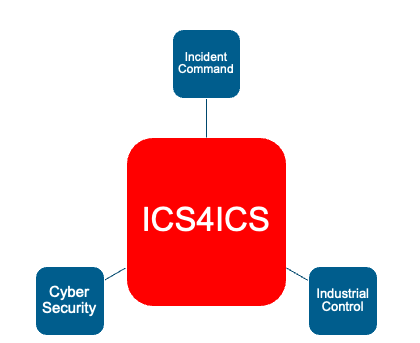ICS – Incident Command System
The Incident Command System (ICS) is a framework used by public agencies to manage emergencies effectively. Businesses can also utilize ICS to collaborate with public agencies during emergencies. Private sector businesses should have a solid understanding of the fundamental concepts of incident command and should coordinate their emergency planning with local public emergency services. The implementation of ICS within a business may vary depending on the size and complexity of the business, with functions and roles assigned to different individuals or individuals taking on multiple responsibilities.
Not all ICS positions need to be active during every incident, as the ICS structure is designed to expand or contract based on the scope of the incident. For smaller incidents, only an incident commander may be assigned. However, command of the incident may transfer to the senior on-scene officer of the responding public agency once emergency services arrive at the scene. The command may transfer back to the business once the public agency departs.
ICS For ICS: Incident Command System for Industrial Controls Systems

ICS4CIS stands for Incident Command System for Critical Infrastructure Security. It is a variant of the Incident Command System (ICS) that is specifically designed to manage critical infrastructure security incidents and emergencies. Critical infrastructure refers to systems, assets, and networks essential to society’s functioning, such as transportation, communication, energy, water, and public health. ICS4CIS provides a standardized organizational structure, terminology, and procedures for coordinating response efforts among multiple agencies and organizations involved in protecting and securing critical infrastructure during incidents or emergencies. It helps ensure effective communication, coordination, and command during complex critical infrastructure security incidents.

The ISA Global Cybersecurity Alliance has joined forces with the Cybersecurity and Infrastructure Security Agency (CISA) and cybersecurity response teams from more than 50 participating companies to adopt the Incident Command System, as outlined by FEMA, for response structure, roles, and interoperability. This is the system used by First Responders worldwide daily when responding to small and large emergency situations like motor vehicle accidents, fires, hurricanes, floods, earthquakes, industrial accidents, and other high-impact situations. More information is available on ICS4ICS Website.
https://www.ics4ics.org/

The ICS4ICS Structure:

ICS Roles:
Incident Commander
- Assumes responsibility for the on-scene response of the organization
- Maintains command until relieved by public agencies or at the start of the next operational period
- Assesses the situation and orders warnings for individuals at risk
- Notifies or verifies that internal teams, departments, public agencies, regulators, contractors, and suppliers have been notified
- Appoints others to incident command positions as needed
- Briefs staff on the current organization and activities, assigns tasks, and schedules planning meetings
- Determines incident objectives and strategy, identifies information needed by others, and ensures planning/strategy meetings are held and attended as required
- Coordinates activities with the Emergency Operations Center (EOC), identify priorities and activities, and provides impact assessment for business continuity, crisis communications, and management.
- Reviews requests for resources, confirm authority for procurement approval, and approves all requests for resources as required.
- Provides information to and coordinates with crisis communications or media relations team
- Terminates the response and demobilizes resources when the situation is stabilized
Safety
- Identifies and assesses hazardous situations and takes measures to prevent accidents
- Prepares safety plan and ensures messages are communicated
- Stops unsafe acts and corrects unsafe conditions
Liaison
- Serves as the point of contact with outside agencies and companies
- Monitors operations to identify inter-organizational problems
Public Information
- Notifies spokespersons and Crisis Communications Team
- Develops information for use in media briefings
- Obtains approval from Incident Commander and management for all news releases
- Conducts periodic media briefings
- Arranges for tours, interviews, or briefings
- Monitors and forwards useful information to the media
Operations
- Manages all tactical operations during the incident
- Assists in the development of the operations portion of the Incident Action Plan
- Ensures safe tactical operations for all responders (in conjunction with any assigned Safety Officer)
- Requests additional resources to support tactical operations
- Expedites appropriate changes in the operations portion of the Incident Action Plan
- Maintains close communication with the Incident Commander
Planning
- Conducts and facilitates planning meetings
- Supervises preparation of the Incident Action Plan
- Determines the need for technical experts from within the company or outside, as well as specialized resources to support the incident
- Coordinates with business continuity and senior management teams
- Assembles information on alternative strategies and plans
- Assesses current and potential impacts on people, property, and the environment
- Compiles and displays incident status information
Logistics
- Provides resources to stabilize the incident and support personnel, systems, and equipment
- Establishes workspace or facilities for incident management staff
- Sets up media briefing center
- Arranges transportation
- Provides communications equipment
- Ensures Incident Command Post and other facilities are established as needed
- Assesses communications need and facilitate communications between teams/personnel/agencies.
- Attends planning meetings and provides input to the Incident Action Plan
- Provides updates on resources availability, response time, and deployment
- Estimates and procures resources for the next operational period
Finance/Administration:
- Manages all financial aspects of the incident
- Provides financial and cost analysis information as requested
- Creates accounts for claims and costs and coordinates with Logistics
- Tracks worker time and costs for materials and supplies
- Documents claims for damage, liability, and injuries
- Notifies risk management/insurance to initiate claims reporting
- Provides incurred and forecasted costs at planning meetings
- Provides oversight of financial expenditures, new leases, contracts, and assistance agreements to comply with corporate governance
